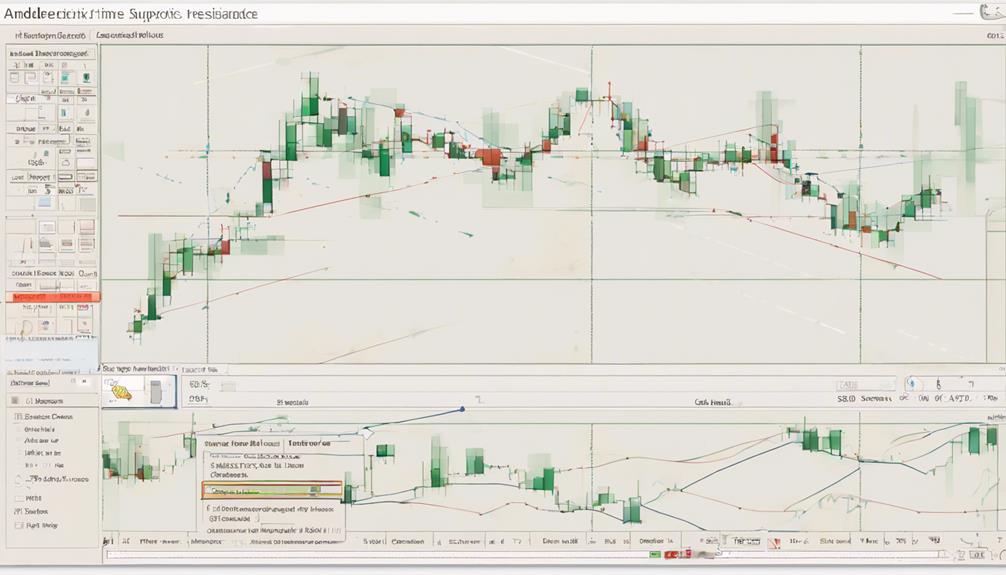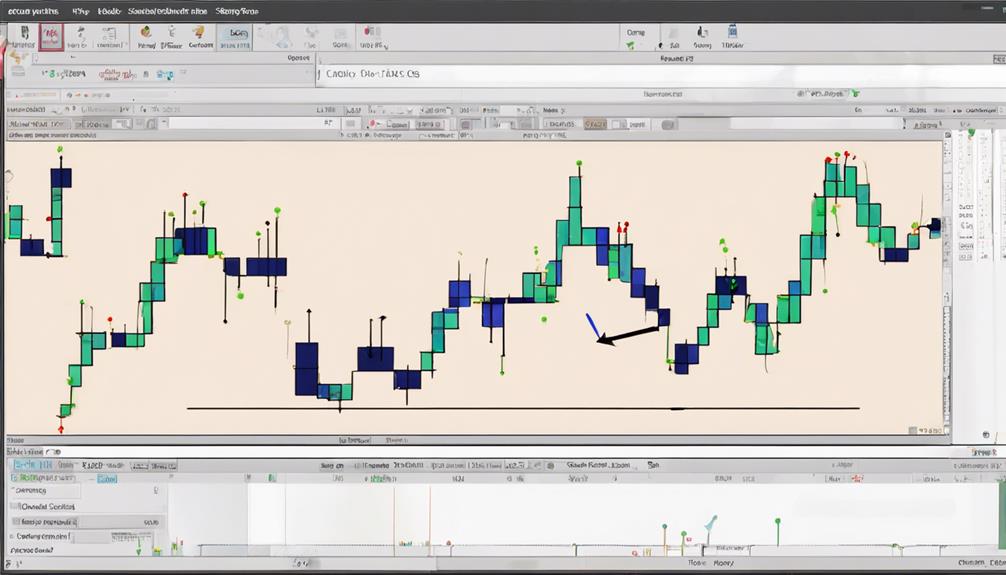In the realm of technical analysis, the Pivot Points Indicator stands as a stalwart tool, offering traders valuable insights into potential market movements and levels of significance. Its intricate calculations and nuanced interpretations provide a foundation for informed decision-making in the fast-paced world of trading.
However, beyond the surface understanding lies a complex web of strategies and applications that can significantly impact trading outcomes. As we navigate through the labyrinth of Pivot Points, exploring their depths may reveal untold secrets that could shape our trading journeys in unforeseen ways.
Understanding Pivot Points Calculation
When delving into the realm of technical analysis in financial markets, understanding the calculation of pivot points serves as a foundational element for traders seeking strategic entry and exit points.
Pivot points, including Fibonacci pivot points, are computed using the high, low, and closing prices from the prior trading session. The central pivot point (PP) is determined as the average of these three values. Support levels (S1, S2, S3) are calculated below the pivot point, while resistance levels (R1, R2, R3) are calculated above it.
These levels help traders identify potential reversal points and make informed decisions regarding entry and exit positions in the market. Pivot point formulas provide clear reference points based on historical price data, aiding in effective trading analysis.
Interpreting Pivot Points Data

Interpreting pivot points data involves analyzing the main pivot point (PP) along with the derived support and resistance levels (S1, S2, S3, R1, R2, R3) to gauge market sentiment and identify potential price reversals in financial trading. These key price levels are pivotal in identifying areas of support and resistance, crucial for traders in determining entry and exit points.
Pivot points serve as a technical analysis indicator used by traders to calculate potential reversal points in the market. By understanding the relationship between the main pivot point and its support and resistance levels, traders can anticipate a pivot point breakout or a bounce at these levels. This information aids traders in making informed decisions regarding their trades, managing risks effectively, and optimizing their trading strategies.
Pivot points are widely used by traders due to their ability to provide valuable insights into market dynamics and price movements.
Utilizing Pivot Points in Trading

Utilization of pivot points in trading provides traders with essential insights into key support and resistance levels for making strategic trading decisions. By incorporating pivot points into their technical analysis tools, traders can effectively gauge potential price reversal points based on the previous session's high, low, and close prices. These levels serve as critical reference points for traders across various timeframes, aiding in the identification of optimal entry and exit points, setting stop-loss orders, and determining profit targets. When used in conjunction with other indicators, pivot points can help confirm signals and optimize trading strategies.
Understanding price action around pivot point levels is crucial for traders looking to capitalize on market movements. Observing how prices interact with these levels can offer valuable clues about market sentiment and potential price movements. By utilizing pivot points effectively, traders can enhance their decision-making process, improve risk management through well-placed stop-loss orders, and fine-tune their profit-taking strategies to maximize trading outcomes.
Advantages of Pivot Points Indicator

Incorporating the pivot points indicator into trading analysis provides traders with a strategic advantage by aiding in the identification of key support and resistance levels crucial for making informed trading decisions. By utilizing this tool, traders can pinpoint potential price reversals and accurately set profit targets, enhancing their trading strategies.
The flexibility of pivot points allows for their application across various timeframes, providing traders with valuable insights for effective decision-making. Moreover, pivot points are widely used to determine optimal entry and exit points, optimizing trading outcomes.
When combined with other technical indicators, pivot points can significantly enhance trading analysis and the overall decision-making process. This synergy enables traders to gain a comprehensive view of the market dynamics, leading to more informed and strategic trading moves.
Thus, the advantages of utilizing pivot points extend beyond mere support and resistance levels, offering a holistic approach to refining trading strategies and maximizing profitability.
Overcoming Pivot Points Challenges

To effectively navigate and mitigate the challenges associated with pivot points in trading analysis, traders must develop a comprehensive understanding of the limitations inherent in their application. When facing challenges related to pivot points, traders can take the following steps to overcome them:
- Acknowledge Market Dynamics: Recognize that pivot points may be less accurate during trending market conditions, requiring additional confirmation from other technical indicators.
- Integrate with Other Tools: Overcome the challenge of accuracy by combining pivot points with other technical analysis tools to enhance price prediction and decision-making.
- Stay Alert to Market Movements: Be prepared for sudden market shifts that can affect pivot point accuracy, necessitating quick adjustments to trading strategies.
- Regular Monitoring and Adjustment: Constantly monitor and adjust pivot points to align with changing market dynamics, ensuring that support and resistance levels are accurately identified for informed trading decisions.
Can I Use the Pivot Points Indicator for Technical Analysis with Only 10 Steps?
Yes, you can analyze pivot points efficiently for technical analysis with only 10 steps. Start by gathering the relevant data, then calculate the pivot points. Plot the levels on the chart and identify potential support and resistance levels. Utilize the indicator to make informed trading decisions.
Frequently Asked Questions
What Is the Best Indicator to Use With Pivot Points?
The Moving Average Convergence Divergence (MACD) indicator is ideal for confirming trends and analyzing momentum when used with pivot points. Its combination offers valuable insights into market direction and strength, enhancing trading decisions.
How Do You Read a Pivot Point Indicator?
Reading a pivot point indicator involves analyzing the main pivot point, support (S1, S2, S3), and resistance levels (R1, R2, R3) to assess market sentiment and predict potential price shifts. Traders utilize this data to make strategic trading decisions.
Do Professional Traders Use Pivot Points?
Professional traders extensively utilize pivot points as crucial tools for identifying key support and resistance levels, facilitating precise entry and exit points, managing risk, setting profit targets, and optimizing trading strategies. Their integration with other technical indicators enhances trading efficiency.
How Do You Use Pivot Points Effectively?
To use pivot points effectively, traders should assess price action around these levels, prioritize those closest to current market prices, and incorporate other technical tools for confirmation. This analytical approach aids in decision-making for profitable trading strategies.
Conclusion
In conclusion, the comprehensive guide to pivot points indicator illuminates the intricate calculations, insightful interpretations, and practical applications of this invaluable tool in trading strategies.
Despite its limitations, the pivot points indicator offers advantages in identifying key support and resistance levels.
By combining it with other technical indicators, traders can enhance their analysis and decision-making processes.
Ultimately, the pivot points indicator proves to be a pivotal tool for traders navigating the complexities of financial markets.


